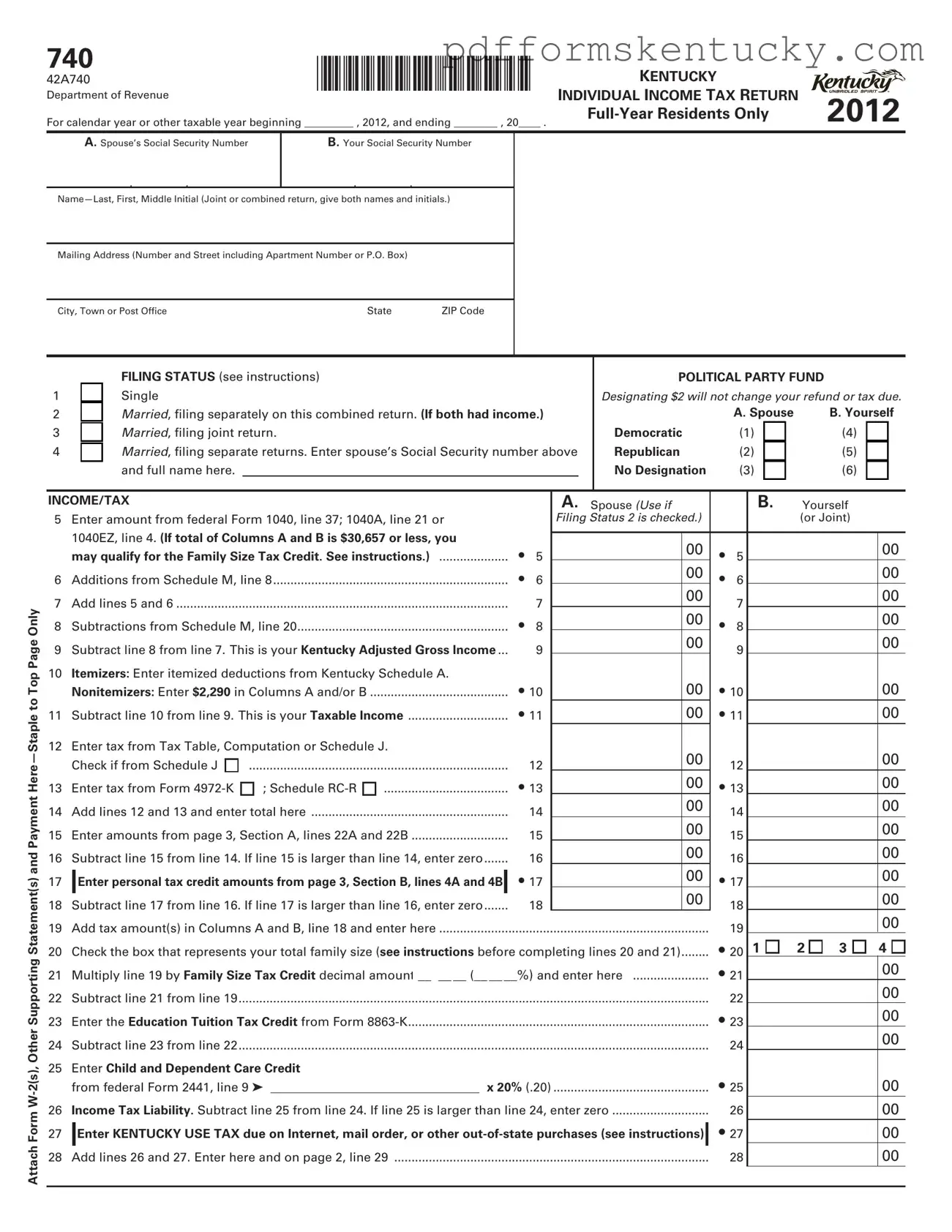What is the Kentucky 740 form?
The Kentucky 740 form is the Individual Income Tax Return for residents of Kentucky. It is used by full-year residents to report their income, calculate their tax liability, and claim any credits or deductions. This form is typically filed annually for the previous calendar year.
Who needs to file the Kentucky 740 form?
Full-year residents of Kentucky who earn income must file the Kentucky 740 form. This includes individuals who are employed, self-employed, or have other sources of income. If you are a part-year resident or non-resident, you may need to use a different form.
What information is required to complete the Kentucky 740 form?
To complete the Kentucky 740 form, you will need personal information such as your Social Security number, your spouse's Social Security number (if applicable), and your mailing address. You will also need details about your income, including amounts from your federal tax return, any tax credits, and deductions you plan to claim.
What is the filing deadline for the Kentucky 740 form?
The filing deadline for the Kentucky 740 form is typically April 15 of the year following the tax year. If April 15 falls on a weekend or holiday, the deadline may be extended to the next business day. It is important to file on time to avoid penalties.
Can I e-file the Kentucky 740 form?
Yes, you can e-file the Kentucky 740 form. Many tax preparation software programs offer the option to file this form electronically. E-filing can be faster and may help you receive any refund more quickly than filing a paper return.
What should I do if I owe taxes?
If you owe taxes when filing the Kentucky 740 form, you can make a payment online, by mail, or in person. Be sure to pay the amount due by the filing deadline to avoid interest and penalties. You can also set up a payment plan if you cannot pay the full amount at once.
What happens if I make a mistake on my Kentucky 740 form?
If you discover a mistake after submitting your Kentucky 740 form, you can file an amended return using Form 740-X. This form allows you to correct errors or claim additional credits. It’s important to address mistakes as soon as possible to avoid issues with the Department of Revenue.
Where can I get help with the Kentucky 740 form?
If you need assistance with the Kentucky 740 form, you can visit the Kentucky Department of Revenue's website for resources and instructions. Additionally, you may consider consulting a tax professional for personalized help with your tax situation.
